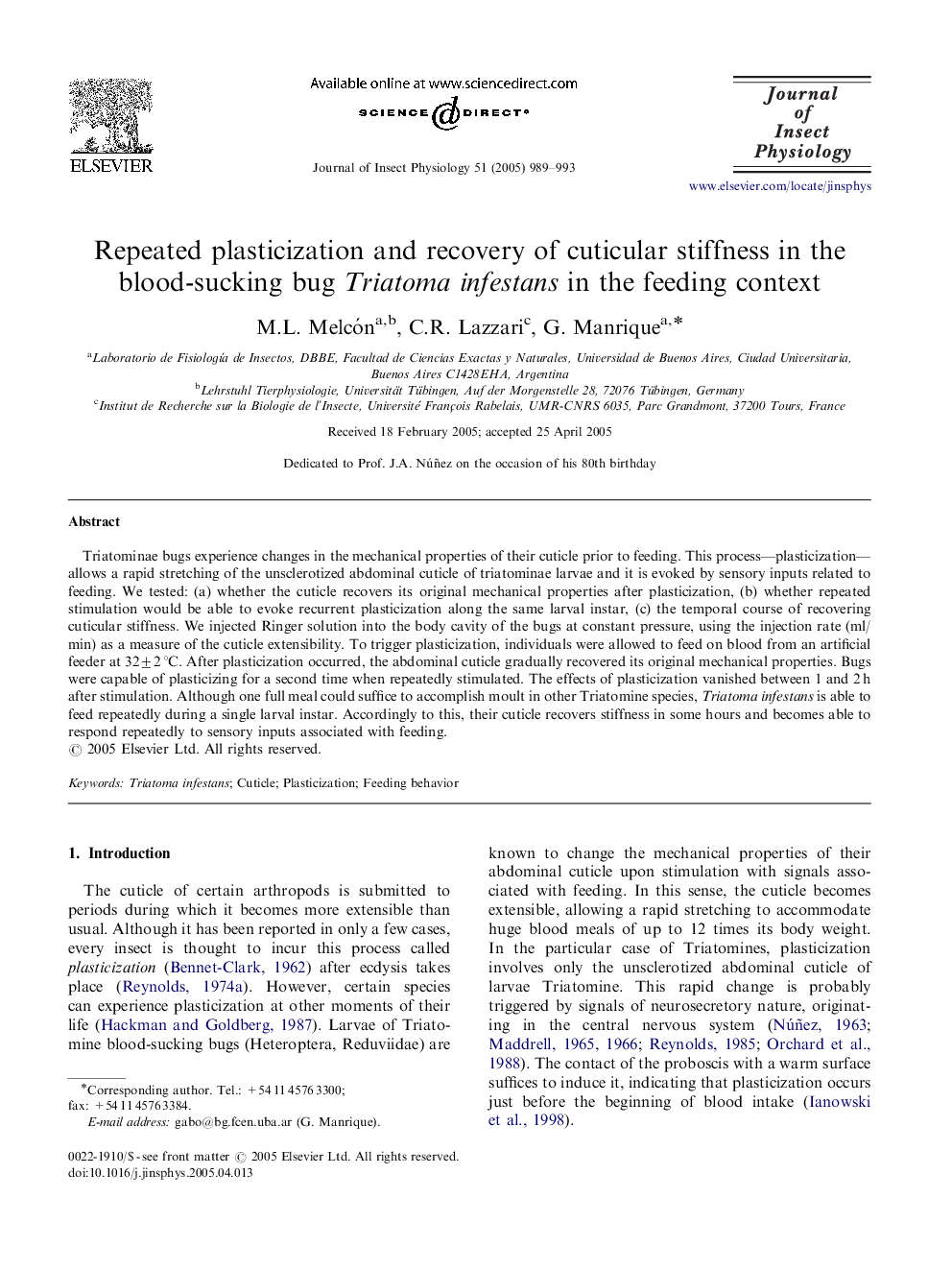| Article ID | Journal | Published Year | Pages | File Type |
|---|---|---|---|---|
| 9147274 | Journal of Insect Physiology | 2005 | 5 Pages |
Abstract
Triatominae bugs experience changes in the mechanical properties of their cuticle prior to feeding. This process-plasticization-allows a rapid stretching of the unsclerotized abdominal cuticle of triatominae larvae and it is evoked by sensory inputs related to feeding. We tested: (a) whether the cuticle recovers its original mechanical properties after plasticization, (b) whether repeated stimulation would be able to evoke recurrent plasticization along the same larval instar, (c) the temporal course of recovering cuticular stiffness. We injected Ringer solution into the body cavity of the bugs at constant pressure, using the injection rate (ml/min) as a measure of the cuticle extensibility. To trigger plasticization, individuals were allowed to feed on blood from an artificial feeder at 32±2 °C. After plasticization occurred, the abdominal cuticle gradually recovered its original mechanical properties. Bugs were capable of plasticizing for a second time when repeatedly stimulated. The effects of plasticization vanished between 1 and 2 h after stimulation. Although one full meal could suffice to accomplish moult in other Triatomine species, Triatoma infestans is able to feed repeatedly during a single larval instar. Accordingly to this, their cuticle recovers stiffness in some hours and becomes able to respond repeatedly to sensory inputs associated with feeding.
Related Topics
Life Sciences
Agricultural and Biological Sciences
Insect Science
Authors
M.L. Melcón, C.R. Lazzari, G. Manrique,
